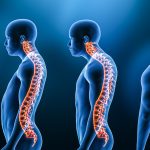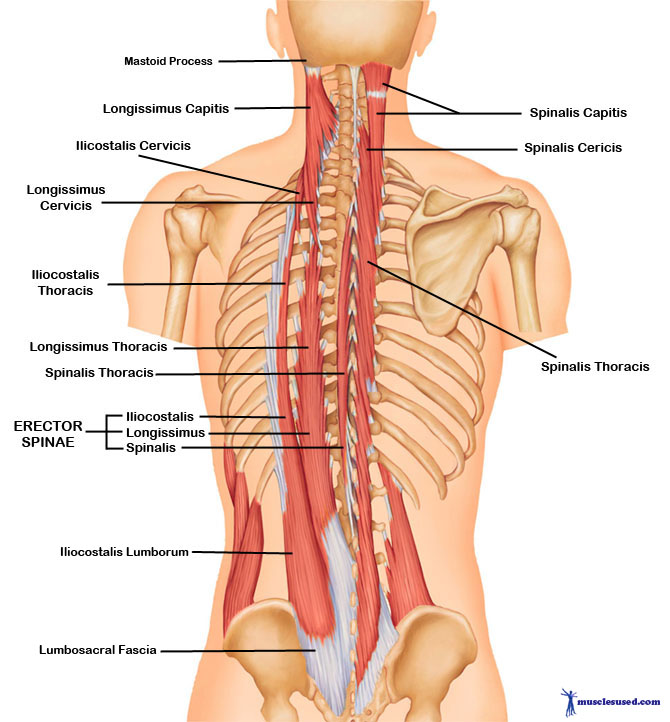
The intrinsic muscles of the back are a bit complex to say the least. Not only are there several muscles that literally overlap, but their names also overlap as well, making matters more confusing. Let’s break everything down in a way that makes sense and that we, as personal trainers, won’t only understand and remember, but use to our advantage when programming our clients.
The Big Picture
Fit pros are most familiar with the global muscles of the back such as the lats, traps, levator scapulae, and rhomboids. These are known as the superficial extrinsic muscles of the back and are truly responsible for motions of the shoulder and the scapulae.
Then there’s a middle extrinsic layer of only two muscles that are involved in motions of the thorax and ribs: the serratus posterior superior and inferior. We don’t talk much about these because targeting them for any particular purpose outside of breathing is unlikely.
The Intrinsic Muscles of the Back Explained
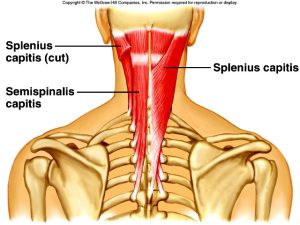
Then we come to the intrinsic back muscles charged with motions of the vertabral column. This layer is further divided into three layers of superficial, intermediate and deep muscles.
- The superficial layer of intrinsic muscles, the spinotransversales, are comprised of the two splenius muscles, spleniuscapitis and splenius cervicis, that rotate the head, extend and laterally flex the cervical spine. They overlay the smaller suboccipital muscles which are sometimes lumped into back musculature, but will leave it in the caudal, or head, category)
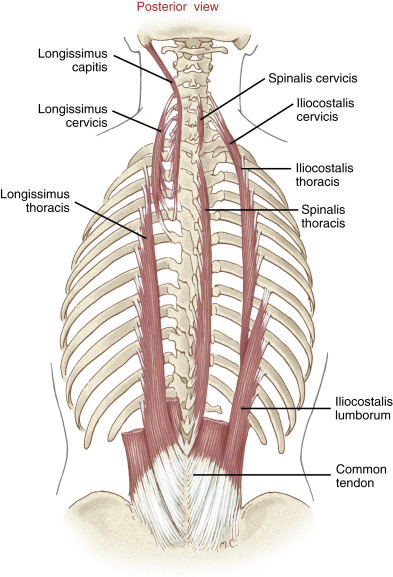
2. The intermediate layer of intrinsic muscles, the erector spinae, include the iliocostalis, longissimus, and spinalis which work to keep the torso upright and stable while also performing spinal extension and rotation. (I’ve seen this lumped into the superficial layer as well, so it seems agreement on the grouping of these complicated muscles is not sweeping!)
3. Finally, the deep intrinsic layer is made up of many small muscles collectively called the 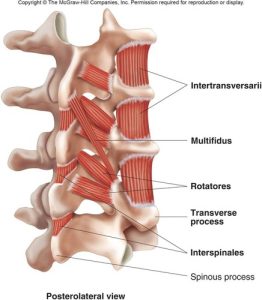 transversospinales and include the semispinalis, multifidus, rotatores, and a group of even smaller, segmental muscles found in between each vertrebra: interspinales, intertransversali, and levatores costarum (the minor group of deep muscles). The job of these muscles is mostly to provide stability and proprioceptive feedback for the larger muscles about vertebral motions.
transversospinales and include the semispinalis, multifidus, rotatores, and a group of even smaller, segmental muscles found in between each vertrebra: interspinales, intertransversali, and levatores costarum (the minor group of deep muscles). The job of these muscles is mostly to provide stability and proprioceptive feedback for the larger muscles about vertebral motions.
Getting All the Intrinsic Muscles Straight
Does all of this information seem overwhelming? It definitely did for me when I started researching this blog. In fact, I intended only to delve into the intermediate layer—the erector spinae—and that’s when I learned there were three layers of deep back muscles and I was only familiar with one. (Well, one and a half—I thought multifidus was a part of the erector spinae group, but alas, that was incorrect!)
The following table might help to organize the layers of the intrinsic muscles of the back and serve as a good reference for when you really want to remember the muscles and where they are located. Bear in mind that the spinal segments are only designations. The capitis and cervicis muscles, for example, generally originate on the thoracic spine.
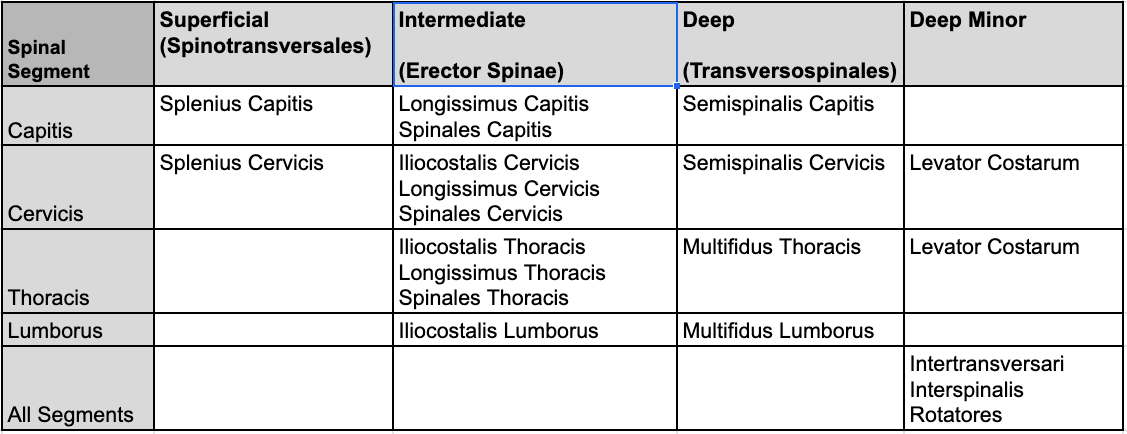
Relevance of Intrinsic Muscles of the Back for Personal Trainers
Understanding and remembering this level of anatomy may not be relevant for every trainer, and if we’re being honest, few would ever really need to know all of this. If you’re an anatomy geek like I am, which you probably are if you’ve been keeping up with this blog series, then you should definitely consider our Anatomy Fundamentals CEC course.
Human movement science is complex, and the more we know as fitness professionals the more successful we can be, both in our careers and in our results with clients.
I endeavored on researching the intrinsic muscles of the back because my own back issues prompted me to understand what was happening. Meeting a knowledgeable Doctor of Physical Therapy and initiating treatment helped shed light on what I was already learning: the multifudus is a muscle that recovers poorly from injury and mine was a big contributor to my chronic pain.
With so many of our clients (and many times—us too!) bound to suffer from back pain, whether acute or temporary, it will give you an edge to understand the complex nature of the muscles that are contributing to it.
If you should find yourself with a client in front of you either discharged from PT for back pain or complaining to you about a chronic issue, asking the right questions might provide more direction on how to program, recommend or refer out when necessary.






